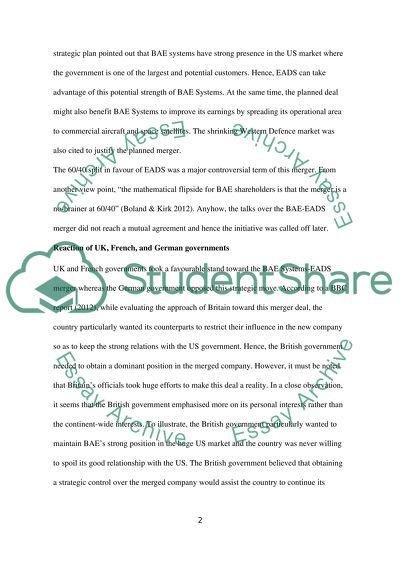Cite this document
(“BAE Systems-EADS Merger Plan Essay Example | Topics and Well Written Essays - 1000 words”, n.d.)
BAE Systems-EADS Merger Plan Essay Example | Topics and Well Written Essays - 1000 words. Retrieved from https://studentshare.org/finance-accounting/1469354-bae-systems-eads-merger-plan
BAE Systems-EADS Merger Plan Essay Example | Topics and Well Written Essays - 1000 words. Retrieved from https://studentshare.org/finance-accounting/1469354-bae-systems-eads-merger-plan
(BAE Systems-EADS Merger Plan Essay Example | Topics and Well Written Essays - 1000 Words)
BAE Systems-EADS Merger Plan Essay Example | Topics and Well Written Essays - 1000 Words. https://studentshare.org/finance-accounting/1469354-bae-systems-eads-merger-plan.
BAE Systems-EADS Merger Plan Essay Example | Topics and Well Written Essays - 1000 Words. https://studentshare.org/finance-accounting/1469354-bae-systems-eads-merger-plan.
“BAE Systems-EADS Merger Plan Essay Example | Topics and Well Written Essays - 1000 Words”, n.d. https://studentshare.org/finance-accounting/1469354-bae-systems-eads-merger-plan.


